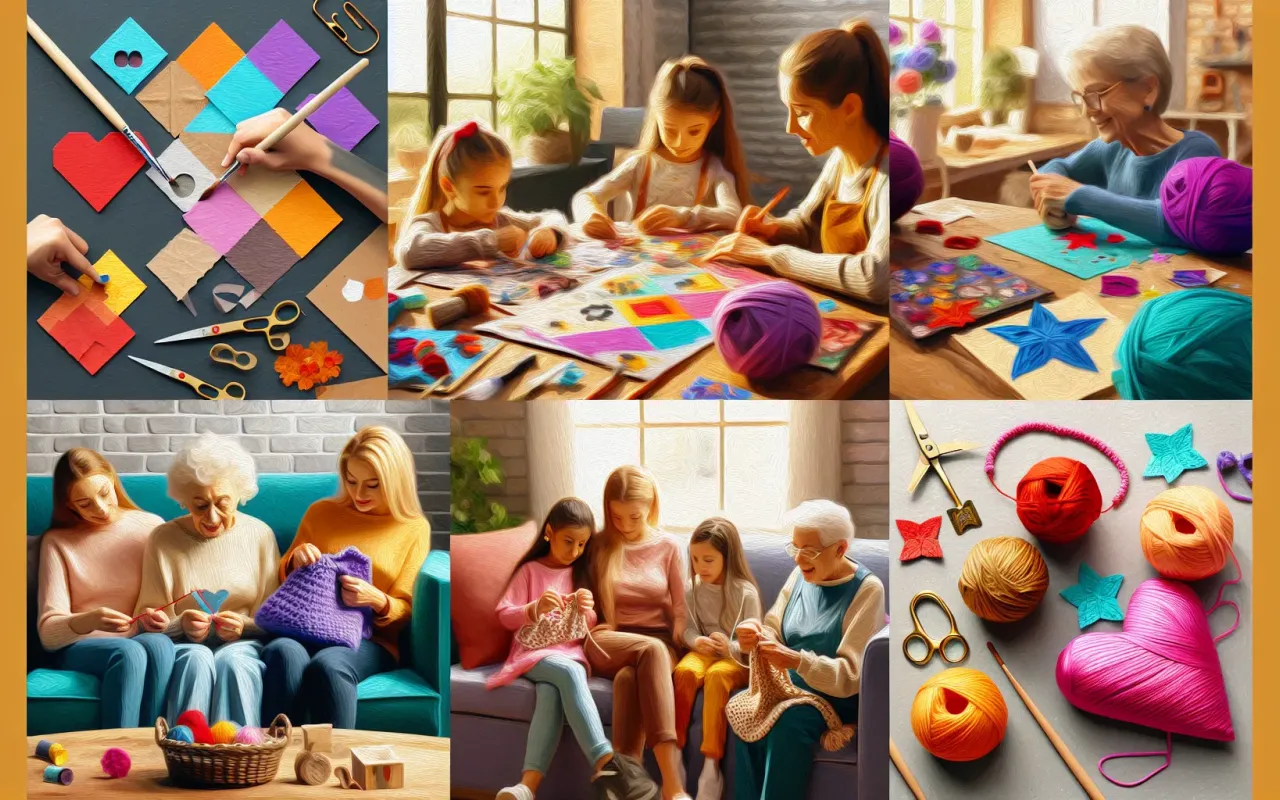Easy DIY projects to sell? Think less “craft fair cliché” and more “stylish side hustle with serious profit potential!” This isn’t your grandma’s knitting circle; we’re talking savvy strategies to turn your creative genius into cold, hard cash. From identifying hot niches to mastering the art of the killer product description (no, seriously, it’s an art), we’ll equip you with the know-how to transform your crafting passion into a thriving enterprise.
Get ready to unleash your inner entrepreneur and say goodbye to boring budget spreadsheets!
We’ll explore three profitable craft niches, offering a detailed look at their target audiences, startup costs, and potential profits. Then, we’ll dive into five super-easy DIY project ideas, providing step-by-step guides, material sourcing tips, and cost estimations. Mastering marketing and sales strategies will be key, and we’ll cover everything from online marketplaces to crafting your own compelling brand.
Finally, we’ll tackle the business side of things, ensuring you’re legally sound and ready to rake in those crafting profits!
Profitable Craft Niches for Beginners
So you want to turn your crafting hobby into a money-making machine? Fantastic! But with a million and one crafty ideas swirling around, choosing the right niche is crucial. Let’s dive into three profitable options perfect for those just starting out, complete with target audiences and profit potential.
Three Profitable Craft Niches

We’ve identified three craft niches that offer a sweet spot between ease of creation, high demand, and decent profit margins. These are perfect for beginners looking to dip their toes into the entrepreneurial waters without getting overwhelmed.
- Personalized Pet Portraits: This niche taps into the ever-growing love for our furry friends. The target audience is pet owners of all ages, particularly those on social media, who are willing to spend on unique, personalized gifts.
- Handmade Candles: Candles are a classic, always-in-demand item. The target audience is broad, encompassing everyone from home decorators to aromatherapy enthusiasts. Different scents and styles can further target specific demographics.
- Resin Coasters & Jewelry: Resin crafts are visually stunning and relatively easy to master. The target audience is young adults and millennials interested in unique home decor and accessories, as well as those seeking statement jewelry pieces.
Comparison of Craft Niches
Let’s break down the startup costs and profit potential of each niche. Remember, these are estimates, and your actual costs and profits will vary based on your materials, pricing, and marketing strategies.
Examine how diy bug crafts for kids can boost performance in your area.
| Niche | Estimated Material Costs per Item | Pricing Strategy | Potential Profit per Item |
|---|---|---|---|
| Personalized Pet Portraits | $5 – $15 (depending on size and materials) | Cost-plus pricing (add 50-100% markup) | $7.50 – $30+ |
| Handmade Candles | $3 – $8 (depending on size and fragrance) | Value-based pricing (consider perceived value and competition) | $5 – $15+ |
| Resin Coasters & Jewelry | $2 – $7 (depending on resin, molds, and embellishments) | Cost-plus pricing (add 75-150% markup) | $3.50 – $17.50+ |
Easy DIY Project Ideas
Now for the fun part – creating your masterpieces! Here are five easy DIY projects that are visually appealing and in high demand, categorized by material type. Remember, practice makes perfect, so don’t be afraid to experiment!
Five Easy DIY Projects, Easy diy projects to sell
- Wood: Simple, geometric-shaped coasters. Materials include wood slices, sandpaper, wood stain or paint, and sealant.
- Fabric: Scrunchies. Materials include fabric scraps, elastic, and sewing machine (or needle and thread).
- Resin: Keychains with embedded dried flowers or pressed leaves. Materials include resin, silicone molds, dried flowers, and keychain hardware.
- Wood: Personalized cutting boards. Materials include wood planks, sandpaper, engraver, and wood oil.
- Fabric: Tote bags. Materials include fabric, interfacing, handles, and sewing machine.
Step-by-Step Guide: Resin Keychains
Let’s craft a beautiful resin keychain. This is a fun project with a relatively quick turnaround time.
- Image 1: Gather your materials: Clear resin, silicone keychain mold, dried flowers, and keychain hardware. The image shows a neatly arranged workspace with all materials clearly visible.
- Image 2: Mix the resin according to the manufacturer’s instructions. The image shows a clear resin being carefully mixed in a disposable cup.
- Image 3: Gently pour the resin into the mold, ensuring it fills evenly. The image shows the resin being poured slowly into the mold.
- Image 4: Carefully arrange the dried flowers within the resin. The image shows the dried flowers being placed artistically in the resin.
- Image 5: Let the resin cure completely according to the instructions (usually 24-48 hours). The image shows the finished keychain in the mold.
- Image 6: Once cured, carefully remove the keychain from the mold and attach the hardware. The image shows the completed keychain, ready to be sold.
Marketing and Sales Strategies
Crafting beautiful items is only half the battle; you need to get them in front of potential customers! Here are three effective marketing strategies to boost your sales.
Effective Marketing Strategies
- Social Media Marketing: Leverage platforms like Instagram, Pinterest, and Etsy to showcase your crafts. Pros: Wide reach, relatively low cost. Cons: Requires consistent effort, algorithm changes can impact visibility.
- Online Marketplaces: Sell your crafts on platforms like Etsy, Amazon Handmade, or Shopify. Pros: Built-in audience, streamlined sales process. Cons: Fees, competition.
- Local Craft Fairs and Markets: Participate in local events to connect directly with customers. Pros: Personal interaction, potential for immediate sales. Cons: Requires upfront investment in booth fees and travel.
Compelling Product Descriptions
A captivating product description is your best friend! Highlight the unique selling points (USP) of each item. For example, for a resin keychain, emphasize the unique design, high-quality materials, and durability. Use evocative language to paint a picture for the buyer.
Sample Social Media Post
Here’s a sample Instagram post for a resin keychain:
“✨Introducing our new collection of floral resin keychains! Each one is handcrafted with love and unique dried flowers. Add a touch of nature to your everyday carry. ✨ Shop now via the link in bio! #resinkeychain #handmade #floral #uniquegifts #shopsmall #etsyseller”
Pricing and Profitability
Pricing your crafts correctly is crucial for profitability. Let’s explore different methods and strategies.
Calculating Cost of Goods Sold (COGS)
COGS is the direct cost of producing your goods. For example, for a resin keychain, COGS would include the cost of resin, mold, dried flowers, and keychain hardware. Accurately calculating COGS is essential for determining your profit margin.
Pricing Strategies

Several pricing strategies can be employed:
- Cost-Plus Pricing: Add a markup percentage to your COGS. For example, a 50% markup on a keychain with a COGS of $5 would result in a selling price of $7.50.
- Value-Based Pricing: Set your price based on the perceived value of your product. This strategy is particularly useful for unique or high-quality items.
Profitability Comparison
Selling through online marketplaces involves fees, reducing your profit margin compared to direct sales at craft fairs. However, online marketplaces offer a much wider reach.
Profit Tracking Spreadsheet
A simple spreadsheet can track expenses (materials, marketing, fees), revenue (sales), and profit for each project. Columns could include: Project Name, Material Costs, Labor Costs, Marketing Costs, Sales Price, Quantity Sold, Revenue, and Profit.
Legal and Business Considerations: Easy Diy Projects To Sell
Before you start selling, it’s crucial to understand the legal and business aspects of running your craft business.
Important Legal Aspects
- Licensing and Permits: Research any necessary licenses or permits required in your area to operate a home-based business or sell handmade goods.
- Taxes: Understand your tax obligations, including sales tax and income tax. Consult a tax professional if needed.
- Product Liability Insurance: Consider product liability insurance to protect yourself from potential claims related to product defects or injuries.
Setting Up a Small Business
Steps include registering your business name, obtaining necessary licenses and permits, opening a business bank account, and understanding tax requirements.
Business Structures
- Sole Proprietorship: Simple to set up, but you are personally liable for business debts.
- Limited Liability Company (LLC): Provides some protection from personal liability, but involves more paperwork.
Pre-Launch Checklist
- Register your business name.
- Obtain necessary licenses and permits.
- Create a business plan.
- Set up your online store or prepare for craft fairs.
- Develop your marketing strategy.
- Obtain product liability insurance (if applicable).
So, there you have it! From brainstorming brilliant ideas to building a booming business, you now possess the arsenal to conquer the world of easy DIY projects to sell. Remember, it’s not just about creating beautiful things; it’s about building a smart, sustainable business that reflects your unique creativity and entrepreneurial spirit. Now go forth and craft your empire! (And maybe send us a thank-you postcard from your beachfront villa…
just kidding… mostly.)
FAQ Insights
What’s the best way to price my DIY projects?
Consider your material costs, time investment, and desired profit margin. Research competitor pricing and experiment with different strategies (cost-plus, value-based) to find what works best.
How do I protect my designs from being copied?
While complete protection is difficult, you can watermark your photos, register your designs (where applicable), and clearly state ownership on your product listings. A strong brand identity also helps.
Where’s the best place to sell my DIY projects online?
Popular platforms include Etsy, Amazon Handmade, and your own website. Each has pros and cons regarding fees, reach, and audience. Experiment to find the best fit.
What legal requirements do I need to consider?
Check your local regulations regarding business licenses, sales tax, and product safety standards. Consult with a legal professional or small business advisor for guidance.

